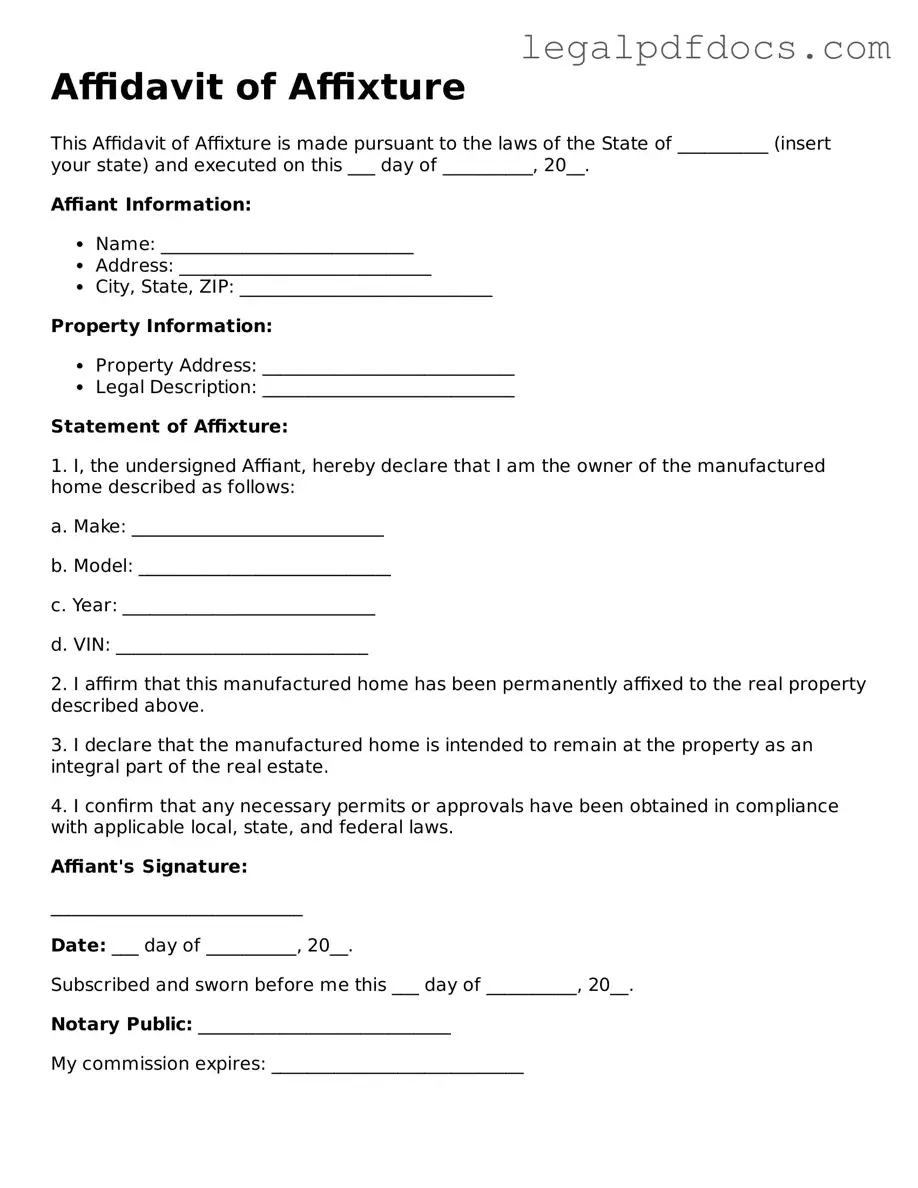Affidavit of Affixture Template
The Affidavit of Affixture is a legal document used to declare that a manufactured home is permanently affixed to a piece of real property. This form serves to establish the home as part of the real estate, ensuring that it is treated as real property rather than personal property. Understanding the significance of this document is crucial for homeowners looking to secure their property rights.
To begin the process of filling out the Affidavit of Affixture form, please click the button below.
Open Affidavit of Affixture Editor Here
